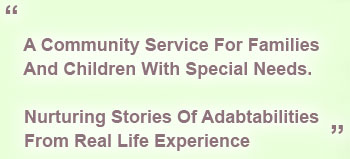Ready-Set-Go

|
|
- Take a Step Back…Take a Deep Breath…then Pause and Reflect
- Step Forward in Conversation
- What to Do When I Think There is No One for Me
- Family and Community Helps
- School Helps
- Another reflection
Take a Step Back…Take a Deep Breath…then Pause and Reflect
- Praise yourself for what has been accomplished. Surely, it’s been a hard road. How many times have you thought you’d drown only to start swimming again? To what do you attribute your rebounding back? What keeps you going?
- Ask, “What gains as well as losses have taken place?” “What is no longer working, though it may have worked earlier?” “ What are the safety issues in the environment?” “What sense of protection and security does the child or person being helped have?” Are you confident that you can make things better, working towards recovery?
- Be good to yourself. How might you take some time for yourself? See Parent Rewards and Motivational Interviewing.
- Assess available opportunities and options. How did you take advantage of them? Talking to someone may help bring up more ideas.
- See Confidence in Progress Family Scale. See Forms and Handouts for additional family forms.

|
|
| [Back to Top] |
Step Forward in Conversation (Assess your readiness to take action by completing the Perceiving Change Form, scaling yourself on a 1-10 scale.)
Positive Assessment for support networks and child’s strengths:
- Family Support Natural Ecology Form – may disclose a natural helper
- ABLE Child Strength List – capacities bringing forth hope
- Positive and Negative Reinforcers Ages 2 – 6
- Positive and Negative Reinforcers Ages 6 – 13 – motivational ideas
- Positive and Negative Reinforcers Ages 13 – 18 – may also spark what adults like and dislike
Problem Assessment:
- Obtain a new baseline of problems or target behaviors by going to USOE Best Behavior Initiative at www.updc.org/behavior/ for discussion of the functional basis of behaviors, and for information on assessing trends, patterns and themes. See also Other Resources – Mental Health and also see For Parents – Behavior Ideas.
- Monitor and Chart Target Behaviors. What’s happening that is good, especially if starting a new strategy. The more details which can be documented, the greater understanding and chance of success. Forms and Data Collection.
- To re-assess such biological and medical concerns as sleep disruptions, acute illness, pain and seizures, see Our Practices – Part II – Physical and Bodily States and the Guidelines for Physician Evaluation Handout.
- Collecting Health Records – from past evaluations including labs and x-rays and previous diagnostic procedures with educational and psychosocial reports. Consider keeping a cumulative file at home . Make copies and try to develop a timeline of medical experiences over the years.
- To review life events, situations, new developments, illness and losses, see Assess Comfort and Stress on Subjective Domain, a 1-10 scale and The Holmes-Rahe Life Stress Inventory.
- Review critical and basic needs such as housing, food, childcare and transportation. Click Other Resources on the menu, including both favorite links and frequently used phone directory.
(Take the next Step with a support person, Leap,and Go Forward making a definite commitment, while you asses s your strength of purpose . Assess Commitment on a 1-10 scale with 1 low commitment and 10 very high.)
- Talk with a partner, a family member, a friend, a church member or a teacher for assistance and support in the next tasks. There is more information in Team Building and Shared Action-Taking.
| [Back to Top] |
What to Do When I Think There is No One for Me
(Review again the Family Support Natural Ecology Form) Did I miss someone?
- Search internet sites- if just starting out, go to www.itools.com for everyday computer ideas that include several search engines (Google, Altavista), learn book marking , downloading and homepage printing. Gather your own list of useful sites. Start with our list-favorite links, Other Resources.
- Look up a chat group or list serve . “utah Kids” is such a source of information and support for parents of kids with disabilities . Check yahoogroups.com, enter ”utah kids”. Check for “our exceptional children”. Also check parent support group, Family to Family network-call Utah Parent Center. Check our advocacy links for local and national support groups.

|
|
- Ask, “What trust do I have in people?” Can I stand up for my child and my myself?
- Think about family or a friend first.
- Contact a teacher, school principal, school psychologist, social worker, counselor, school nurse and or Special Education director, and request an appointment with the person best suited to you and the problem. They may share their knowledge, ideas, and resources with you or give emotional support.
- Contact a formal parent advocacy support person at the Utah Parent Center, Allies, or LINCS. You can also look under Other Resources from the menu.
- Contact community resources for critical needs on any number of other issues, or surf through the Topical Resource Manual (Word document).
- Contact a health provider such as a doctor, or someone at a public health or community resource center and request an appointment to discuss the problem. (See Utah Medical Association for Health Access Project or Physician Referral Service at Info Bank, phone number 211.) A School Nurse may help you find a source for health care. You may also call the ABLE Program at 801-584-8552 for help.
- Prepare interview questions – to use with the proposed health provider; go over the questions with a friend. Take notes, ask what the doctor knows about developmental disorders, autism and ADHD. Is this someone that you can develop a partnership with? Is this person a good listener? What is their knowledge of 504 plans, 94-142 and school resources. Will this person communicate with teachers? Are they open to possible complimentary health, dietary or herbal practices?
- Rule out a medical reason for concerns in such areas as sleep, general or dental pain, headaches, nutrition, or medication management. See the Combined Health/Risk Checklist as well as the Physical Health and Bodily System Problems for additional materials.
- The Nursing Checklist Form can help you identify health patterns and understand what concerning areas need particular assessment.
| [Back to Top] |
- Pre-intervention Assessment and Strategies Schools may want to try solutions to a problem prior to testing. See the National Association of School Psychologists RTI.
- For Sensory Issues, Motor Sequencing, Handwriting or Self-help Problems request an OT assessment through the school or another agency. See Our Pratices – Part II – Sensory and Motor Sequencing.
- Language Testing is done by schools or other agencies to assess a child’s ability to communicate his or her needs and wants.
- Behavioral Functions can be assessed by a psychologist through behavior analysis, observation of a child’s concentration, social skills and learning skills, on standardized tests.
- Rating Scales– check out public domain rating scales, questionnares, and check lists under forms and handouts and health and problem assessments as well as under the 7 modules. Which modules reflect your child? There may be several when complexity applies.
- Review school testing needs.
| [Back to Top] |
Another Reflection and First Step
- Pause again- Reflect, “how do I feel now”? What made this so? Some more praise? What step are you at now? What really helped? How about a celebration to mark what you have done. Faith sustains! Hope Floats!
Before going on from this section click on Family Strengths Assessment after thinking about what are your strenghts to accomplish your goals. Contributed by LINCS Inc, courtesy of Sherilan Rowley.
_______________________________________________________
| << Back |








Social Networks
Follow Us